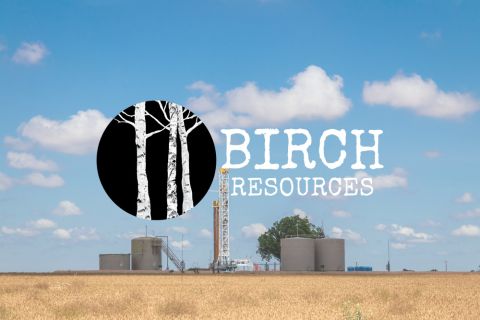
Crude prices took another tumble due to the declining Chinese economy, which has impacted global commodity markets. This resulted in West Texas Intermediate (WTI) crude prices falling to just under $53 per barrel (/bbl) after having traded at about $60/bbl for the previous month.
There are additional concerns about the fate of Greece, which has a deadline to reach a bailout deal this weekend or be expelled from the Eurozone. However, PIRA Energy Group said in a June 6 research note that it is likely that the European Central Bank or the U.S. Federal Reserve will take aggressive action if needed to support Greece. Additionally, the firm anticipates these risks will be countered by wage gains in the developed world in the second-half of 2015.
Though U.S. crude stocks reversed a two-month trend by increasing this past week, PIRA Energy Group stated that draws are expected to return next week due to strong demand for gasoline and distillate. “The worst of oil market imbalance is over with inventory overhang being much less than generally expected. Crude stock draws have already begun and will pick up momentum in the third quarter. Longer-term supply/demand fundamentals are bullish,” the firm said.
Decreased WTI prices pushed heavy NGL prices down after experiencing a bump the previous week. These gains were largely attributed to traders firming up positions at the end of June rather than a long-term increase in demand.



The largest decline was for the NGL with the closest relationship to crude, C5+, which fell 9% at Conway to $1.10 per gallon (/gal), its lowest price since it was $1.07/gal the week of March 18. The Mont Belvieu price fell 6% to $1.13/gal, the lowest it has been since it was $1.12/gal the week of March 18.
Ethane prices also experienced large losses in value as the Mont Belvieu price fell 10% to 17 cents/gal and 8% to 14 cents/gal at Conway. However, balances continue to tighten and prices should begin to experience an uptick in the second-half of the year.
While the outlook for propane is weaker than other NGL values, the Mont Belvieu price actually experienced a 2% gain. This was tempered by a steady drop in price throughout the first week of July. Indeed, En*Vantage reported that propane needs a perfect storm of strong heating and crop-drying demand and maximum LPG exports next winter. It is likely that a large propane storage overhang will again be in place heading into next summer.
Though it is expected that heavy NGL prices will continue to struggle through the remainder of 2015, Raymond James & Associates said that heavy NGL prices weren’t hit as hard as WTI until Q2 2015. “Given crude’s importance to the heavy-end and the less than optimistic light-end outlook, it is somewhat surprising that the composite bbl hadn’t been hit quite as hard as crude until the second quarter… While the recent fall in pricing was slightly less precipitous in natural gas liquids than in crude oil, we feel there has not been a substantial structural/fundamental change to the relationship of the two commodities,” the investment firm said in a recent research note.
The theoretical NGL bbl price at both hubs fell at similar rates to WTI prices with a 7% decline to $17.35/bbl with a 10% drop in margin to $8/bbl at Conway. The Mont Belvieu price experienced a smaller 4% decline to $19.07/bbl with a 6% drop in margin to $9.17/bbl.
A decrease in natural gas prices helped to somewhat temper declines in the frac spread margin, although gas prices still hovered in the same range they’ve traded at for most of 2015 at just under $3.00 per million Btu.
The most profitable NGL to make at both hubs was C5+ at 82 cents/gal at Conway and 83 cents/gal at Mont Belvieu. This was followed, in order, by isobutane at 21 cents/gal at Conway and 25 cents/gal at Mont Belvieu; butane at 20 cents/gal at Conway and 23 cents/gal at Mont Belvieu; propane at 9 cents/gal at Conway and 15 cents/gal at Mont Belvieu; and ethane at negative 3 cents/gal at Conway and negative 1 cent/gal at Mont Belvieu.
Natural gas storage levels rose at a rate on the high-end of its average summer injections with a 91 billion cubic feet increase. According to the U.S. Energy Information Administration this resulted in storage rising to 2.668 trillion cubic feet (Tcf) the week of July 3 from 2.577 Tcf the previous week. This was 33% greater than the 2.009 Tcf posted last year at the same time and 2% above the five-year average of 2.623 Tcf.
Storage levels may not be as high next week based on the National Weather Service’s most recent forecast, which anticipates warmer-than-normal temperatures throughout much of the country. This is likely to result in an increase in cooling demand.
Recommended Reading
EY: How AI Can Transform Subsurface Operations
2024-10-10 - The inherent complexity of subsurface data and the need to make swift decisions demands a tailored approach.
E&P Highlights: Oct. 7, 2024
2024-10-07 - Here’s a roundup of the latest E&P headlines, including a major announcement from BP and large contracts in the Middle East.
Hot Permian Pie: Birch’s Scorching New Dean Wells in Dawson County
2024-10-15 - Birch Resources is continuing its big-oil-well streak in the Dean formation in southern Dawson County with two new wells IP’ing up to 2,768 bbl/d.
Oceaneering Acquires Global Design Innovation
2024-10-30 - Oceaneering purchased Global Design Innovation, the only provider certified by the United Kingdom Accreditation Service (UKAS) to perform remote visual inspection using point cloud data and photographic images.
Comments
Add new comment
This conversation is moderated according to Hart Energy community rules. Please read the rules before joining the discussion. If you’re experiencing any technical problems, please contact our customer care team.




